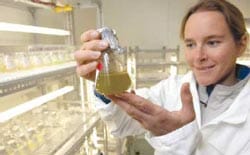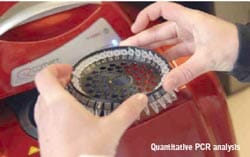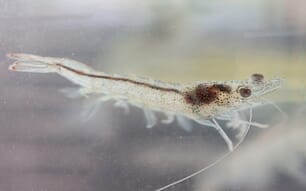Cawthron Institute has established a specialised team to lead the development and application of new and emerging technologies for environmental monitoring, management of risks to seafood safety and new products from marine and freshwater micro-organisms. The Aquatic Biotechnologies Group will provide technology-based solutions to resource planners, environmental managers, councils and the seafood industry, as well as to start-up businesses looking to develop new high-value products.

While New Zealand already has a significant reputation in seafood safety, researcher on harmful algae, Dr Lesley Rhodes, sees aquatic biotechnologies as the key to providing industry with the ability to stay at the leading edge.
Dr Rhodes said: "Our role will be to develop accurate, cost-effective tools and technologies to better understand the safety of products and detection of harmful algae. This knowledge will be critical to ensure that New Zealand seafood product continues to meet food safety standards."
Because of stringent international seafood safety standards, Dr Rhodes says industry needs to be sure that any product leaving our shores is not going to be rejected when it arrives at market.
She explained: "We will be looking to provide tools that not only provide the answers faster and cheaper than before, but also techniques that can be used easily in the field to detect whatever may be in the water, long before shellfish have the chance to take them up."
Dr Rhodes is confident that the Aquatic Biotechnologies Group brings together the capabilities to address industry needs. "Together we have the expertise to ensure we can provide answers to questions around water quality, especially those of concern to the shellfish industry in terms of knowing which harmful algal blooms, viruses and bacteria may impact on their product."
Many of the new methods will rely on molecular-based techniques. Such techniques are very powerful because they can identify specific features of molecules at very low concentrations thus being sensitive and specific at the same time. Researcher, Dr Susie Wood, says these techniques will also provide new solutions to help manage environmental problems, resulting in improved environmental management.
Microbial Source Tracking, or MST, is an example; providing a powerful, rapid and accurate tool for councils and industry to identify and trace the origin of unwanted micro-organisms in freshwater or marine systems.
Cawthron is also working with Waikato University to develop a suite of molecular-based techniques to detect and determine toxin production potential of blue-green algae (cyanobacteria) which form blooms in lakes and rivers. Skin rashes and digestive upset in swimmers and fatalities in dogs have been ascribed to such toxins. Rapid and accurate identification of problem alga species can, for example, help councils determine when to issue health warnings while minimising false alarms.

The techniques being developed will also support biosecurity efforts, for instance, by detecting new invasive species in ships' ballast water. This will improve our ability to reduce the risk of new marine incursions and provide early warning of non-native species in our waters.
Algal technologies leader, Dr Mike Packer, says the new technologies will provide ways to generate value from the many micro-organisms in marine and freshwater environments, especially algae.
Along with the potential to explore high value products, nutraceuticals and raw ingredients for many industrial processes, he says another driver will be on commercial opportunities for renewable energies and waste mitigation, including greenhouse gases.
Dr Packer said: "Given that algae are the fastest growing primary producers on the planet, at least an order of magnitude faster than any terrestrial crop, if one is considering any biomass to commodity products process, such as biofuels, it makes sense to consider algae in the mix."
While there are several hurdles to overcome, he believes turning our attention to areas of innovation required for true biofuel production will mean focusing aquatic biotechnologies on higher value products from large-scale algal farms in the near term.
"This will allow us to get our teeth into it in an economically sensible way and apply creative solutions to those problems," Dr Packer said.
The Aquatic Biotechnologies Group will not be limiting its investigations to energy. There are many other potential co-productions, such as nutritional oils, animal feeds, biopolymers, building materials, bioplastics and raw materials for cosmetics.
October 2009



